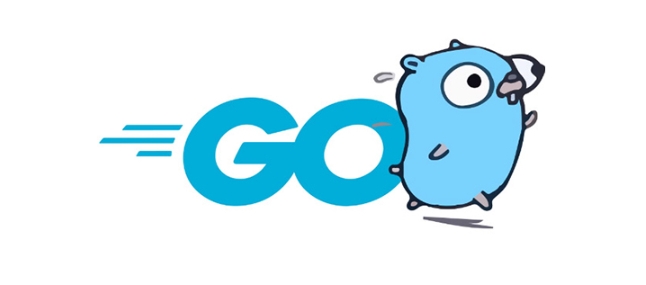To embed the file contents into the string of the Go program, you should use go:embed (Go 1.16) to embed the file at compile time; 1. Add the //go:embed directive above the target variable; 2. Make sure the file path is correct and the file exists; 3. Use string type variables to receive text content; 4. Build the project through go build to include the file content, which is safe and efficient and requires no additional tools, and ultimately implements the file contents directly into the binary file as a string.

In Go, you can't directly "embed a file" into a string in the way you might think (like bundling a file into your binary and reading it as a string at compile time), but there are practical ways to include a file's contents as a string in your Go program . Here's how to do it effectively:

? 1. Use go:embed (Go 1.16) – Recommended
The cleanest and most idiomatic way is using the //go:embed directive, which allows you to embed files into variables at build time.
Example: Embed a text file into a string
package main
import (
"embed"
"fmt"
)
//go:embed example.txt
var content string
func main() {
fmt.Println(content)
} Assuming example.txt exists in the same directory and contains:

Hello, embedded world! This is a text file.
When you run the program, it will print that content.
? The file is embedded into the binary at compile time.
? Embed multiple files or directories
Use embed.FS for more flexibility:
package main
import (
"embed"
"fmt"
)
//go:embed example.txt
var content string
//go:embed templates/*.html
var templates embedded.FS
func main() {
fmt.Println("File content:")
fmt.Println(content)
html, _ := templates.ReadFile("templates/index.html")
fmt.Println("Template content:")
fmt.Println(string(html))
}This embeds both a single file as a string and a folder of HTML files into a filesystem.
?? Requirements for go:embed
- The comment
//go:embedmust be immediately above the variable. - The variable must be of type:
-
string -
[]byte -
embed.FS
-
- The file(s) must exist at build time relative to the Go file.
- Works with
go build, not always in playgrounds or some IDEs.
? Don't use raw string literals manually
You might be tempted to read a file at runtime and paste its contents as a string literal:
var content = `...all file contents here...`
But this is error-prone, hard to maintain, and not automated. Avoid it unless the string is small and static (like a JSON snippet).
? Alternative: Generate code at build time
For older Go versions (<1.16) or complex cases, use code generation (eg, with go generate and a script that converts a file to a string variable).
Example script ( generate.go ):
//go:generate go run generate_file.go
package main
var embeddedFile = `{{.FileContent}}` // populated by generator Then write a tool that reads the file and writes a .go file containing the string.
But again, go:embed is simpler and preferred if you're on Go 1.16.
Summary
To embed a file into a string in Go:
- ? Use
//go:embedabove astringvariable (Go 1.16) - ? Keep the file in the right path
- ? Build with
go build— no extra tools needed
It's not about runtime file loading — it's about compile-time embedding , which is safe, efficient, and standard.
Basically just:
//go:embed myfile.txt var myString string
And you're done.
The above is the detailed content of How to embed a file into a string in Go?. For more information, please follow other related articles on the PHP Chinese website!

Hot AI Tools

Undress AI Tool
Undress images for free

Undresser.AI Undress
AI-powered app for creating realistic nude photos

AI Clothes Remover
Online AI tool for removing clothes from photos.

Clothoff.io
AI clothes remover

Video Face Swap
Swap faces in any video effortlessly with our completely free AI face swap tool!

Hot Article

Hot Tools

Notepad++7.3.1
Easy-to-use and free code editor

SublimeText3 Chinese version
Chinese version, very easy to use

Zend Studio 13.0.1
Powerful PHP integrated development environment

Dreamweaver CS6
Visual web development tools

SublimeText3 Mac version
God-level code editing software (SublimeText3)
 How does the switch statement work in Go?
Jul 30, 2025 am 05:11 AM
How does the switch statement work in Go?
Jul 30, 2025 am 05:11 AM
Go's switch statement will not be executed throughout the process by default and will automatically exit after matching the first condition. 1. Switch starts with a keyword and can carry one or no value; 2. Case matches from top to bottom in order, only the first match is run; 3. Multiple conditions can be listed by commas to match the same case; 4. There is no need to manually add break, but can be forced through; 5.default is used for unmatched cases, usually placed at the end.
 What are runes in Go?
Jul 31, 2025 am 02:15 AM
What are runes in Go?
Jul 31, 2025 am 02:15 AM
AruneinGoisaUnicodecodepointrepresentedasanint32,usedtocorrectlyhandleinternationalcharacters;1.Userunesinsteadofbytestoavoidsplittingmulti-byteUnicodecharacters;2.Loopoverstringswithrangetogetrunes,notbytes;3.Convertastringto[]runetosafelymanipulate
 How do you read a file line by line in Go?
Aug 02, 2025 am 05:17 AM
How do you read a file line by line in Go?
Aug 02, 2025 am 05:17 AM
Using bufio.Scanner is the most common and efficient method in Go to read files line by line, and is suitable for handling scenarios such as large files, log parsing or configuration files. 1. Open the file using os.Open and make sure to close the file via deferfile.Close(). 2. Create a scanner instance through bufio.NewScanner. 3. Call scanner.Scan() in the for loop to read line by line until false is returned to indicate that the end of the file is reached or an error occurs. 4. Use scanner.Text() to get the current line content (excluding newline characters). 5. Check scanner.Err() after the loop is over to catch possible read errors. This method has memory effect
 What is the standard project layout for a Go application?
Aug 02, 2025 pm 02:31 PM
What is the standard project layout for a Go application?
Aug 02, 2025 pm 02:31 PM
The answer is: Go applications do not have a mandatory project layout, but the community generally adopts a standard structure to improve maintainability and scalability. 1.cmd/ stores the program entrance, each subdirectory corresponds to an executable file, such as cmd/myapp/main.go; 2.internal/ stores private code, cannot be imported by external modules, and is used to encapsulate business logic and services; 3.pkg/ stores publicly reusable libraries for importing other projects; 4.api/ optionally stores OpenAPI, Protobuf and other API definition files; 5.config/, scripts/, and web/ store configuration files, scripts and web resources respectively; 6. The root directory contains go.mod and go.sum
 How to import a local package in Go?
Jul 30, 2025 am 04:47 AM
How to import a local package in Go?
Jul 30, 2025 am 04:47 AM
To import local packages correctly, you need to use the Go module and follow the principle of matching directory structure with import paths. 1. Use gomodinit to initialize the module, such as gomodinitexample.com/myproject; 2. Place the local package in a subdirectory, such as mypkg/utils.go, and the package is declared as packagemypkg; 3. Import it in main.go through the full module path, such as import "example.com/myproject/mypkg"; 4. Avoid relative import, path mismatch or naming conflicts; 5. Use replace directive for packages outside the module. Just make sure the module is initialized
 How do you handle routing in a Go web application?
Aug 02, 2025 am 06:49 AM
How do you handle routing in a Go web application?
Aug 02, 2025 am 06:49 AM
Routing in Go applications depends on project complexity. 1. The standard library net/httpServeMux is suitable for simple applications, without external dependencies and is lightweight, but does not support URL parameters and advanced matching; 2. Third-party routers such as Chi provide middleware, path parameters and nested routing, which is suitable for modular design; 3. Gin has excellent performance, built-in JSON processing and rich functions, which is suitable for APIs and microservices. It should be selected based on whether flexibility, performance or functional integration is required. Small projects use standard libraries, medium and large projects recommend Chi or Gin, and finally achieve smooth expansion from simple to complex.
 What are build constraints in Go?
Jul 31, 2025 am 02:53 AM
What are build constraints in Go?
Jul 31, 2025 am 02:53 AM
BuildconstraintsinGoarecommentslike//go:buildthatcontrolfileinclusionduringcompilationbasedonconditionssuchasOS,architecture,orcustomtags.2.TheyareplacedbeforethepackagedeclarationwithablanklineinbetweenandsupportBooleanoperatorslike&&,||,and
 How do you parse command-line flags in Go?
Aug 02, 2025 pm 04:24 PM
How do you parse command-line flags in Go?
Aug 02, 2025 pm 04:24 PM
Go's flag package can easily parse command line parameters. 1. Use flag.Type() to define type flags such as strings, integers, and booleans; 2. You can parse flags to variables through flag.TypeVar() to avoid pointer operations; 3. After calling flag.Parse(), use flag.Args() to obtain subsequent positional parameters; 4. Implementing the flag.Value interface can support custom types to meet most simple CLI requirements. Complex scenarios can be replaced by spf13/cobra library.







